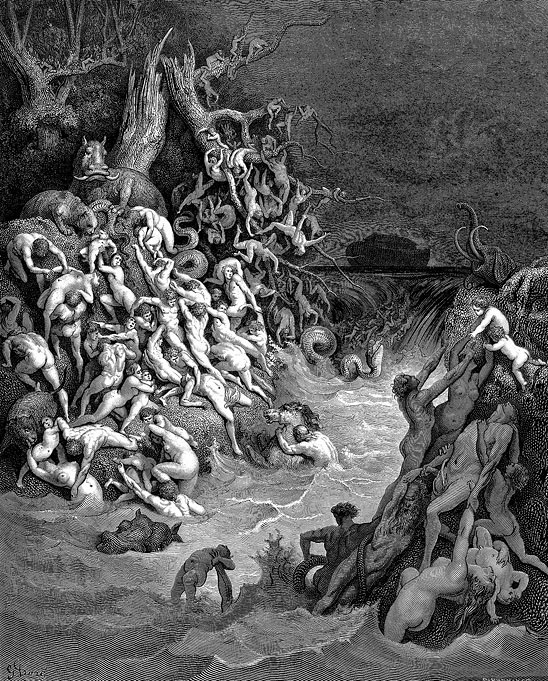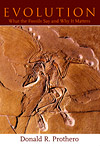In this week’s eSkeptic:


Ankylosaur Attack nominated for Silver Birch. ORDER THE BOOK.
NEW ON SKEPTICBLOG.ORG
Ankylosaur Attack
Nominated for Silver Birch
Daniel Loxton announces that his book Ankylosaur Attack is among the 2013 Forest of Reading Silver Birch Express Award nominees revealed by the Ontario Library Association.
My First Junior Skeptic Cover,
10 Years Ago This Month
Daniel Loxton offers some “making of” insight into his first Junior Skeptic cover—completed 10 years ago this month.

A Threesome With Jesus
SKEPTICALITY EPISODE 193
This week on Skepticality, Derek sits down with Dr. Darrel Ray to discuss his latest book, Sex and God: How Religion Distorts Sexuality. Dr. Ray, is a former minister, now the creator of the Recovering From Religion support system, and founder of the Secular Therapist Project which allows secular-minded people to find therapists near them who practice from a secular, scientific mindset. His new book discusses the harm that religion continues to exert on human sexuality in modern society, and how this harm happens within almost every sect, and flavor of belief.
Get the Skepticality Podcast App
for Apple and Android Devices!
Get the Skepticality App — the Official Podcast App of Skeptic Magazine and the Skeptics Society, so you can enjoy your science fix and engaging interviews on the go! Available for Android, iPhone, iPad, and iPod Touch. Skepticality was the 2007 Parsec Award winner for Best “Speculative Fiction News” Podcast.
The Latest Episode of Mr. Deity
WATCH THIS EPISODE | DONATE | NEWSLETTER | FACEBOOK | MrDeity.com
About this week’s eSkeptic
Recently, we posted Chris White’s 3-hour refutation of the theories proposed on the History Channel’s Ancient Aliens that claim we were engineered by extraterrestrials. However, the notion of a worldwide flood mentioned in the otherwise excellent documentary could use some debunking.
In this week’s eSkeptic, Skeptic magazine’s Religion Editor, Tim Callahan, and our resident geologist Donald Prothero, debunk Noah’s Flood both from a mythological and geological standpoint.

“And the waters prevailed upon the earth an hundred and fifty days.” —Genesis 7:24
“The World Destroyed by Water” by Gustave Doré.
A Flood of Nonsense!
The Myth of a Universal flood Myth
by Tim Callahan
One of the programs of the (so-called) History Channel that is particularly galling to me as a skeptic is their Ancient Aliens series, where Erich von Daniken, Zecharia Sitchen, Georgio Tsoukalos and David Childress, among others, advance the pseudo-scientific theory that extraterrestrials both created us through biological engineering and gave us our ancient civilizations. In the process of advancing their dogma, they spout blatant falsehoods that go utterly unchallenged. The History Channel, shamefully, makes no attempt whatsoever to offer any rebuttal to these spurious claims. Rather, as is their policy with any program dealing with the historicity of anything from the Bible, their policy toward ancient astronaut theorists is one of shameless pandering, a strategy most probably determined by favoring profits over proof and ratings over reason. Fortunately, filmmaker Chris White has addressed this imbalance, putting the lie to these claims thoroughly in his three-hour documentary Ancient Aliens Debunked, recently posted on Skeptic.com.
Unfortunately, in one area in particular Mr. White has stumbled badly in his assertion that the biblical story of the flood is not derived from Sumerian flood stories (whose connection to the ancient alien series is thin in any case) and instead claims that both biblical and Sumerian flood stories reflect an actual worldwide flood and are not the result of cultural diffusion from some earlier myth. According to White, all over the world there is a universal myth of a worldwide flood in which only a few people, usually about eight, are saved by entering a boat, while the rest of humanity is drowned. White argues that, of course, one great drawback to such an assertion is that science in no way supports such a universal flood. Geology and the fossil record and genetics all militate strongly against any historical validity of a worldwide flood. Thus, comparative mythology is his only evidence on the offing.
Are flood myths universal? No. At least, not one in which a worldwide flood wipes out all of the human race but for a couple or a single family. Consider the case of China. Does this large country with an unbroken history going back to ancient times have a flood myth, replete with a boat on which a few survivors escape, from thence to reestablish the human race? It does, however that particular flood myth comes from an ethnic minority called the Miao. They speak a language similar to Thai and appear to have immigrated to China from Southeast Asia. The only other flood myth from China involves annual flooding from rivers and the need for people to work together to prevent such destruction. It involves no ark and no destruction of all life on the planet.
Consider also an Egyptian flood myth. Surely this one should be similar to those of the Bible and Mesopotamia if the flood were, in fact, historical. In this myth the gods, suspecting mortal treachery against them, dispatch the goddess Hat-hor to take vengeance on the human race. However, her blood lust gets out of hand and threatens to utterly annihilate humanity. Since this is not the aim of the gods, they pour out upon Egypt a flood of beer brewed from mandrake root, which has soporific properties. Hat-hor, setting out on her daily rampage, looks down at the flooded land of Egypt, sees her own beautiful visage reflected in the beer and bends down to kiss it. She begins to drink the mandrake root beer and drinks so much of it that she forgets the plan of destruction and instead staggers off to bed. Thus, in the Egyptian flood story, the flood saves the human race.
Yet another flood story that differs significantly from the biblical one is found in Norse myth. Odin and his two brothers, Villi and Ve, kill the frost giant, Ymir, and make the world out of his body. His blood creates a flood that drowns most of the other frost giants. All this happens before the creation of the human race.
There is no native Celtic flood myth. I have to stress the word “native” since the Celtic myths, like those of the Teutonic peoples were written down by Christian monks, who harmonized them with myths from the Bible. Here is yet another problem with the vaunted universality of flood myths: Many of them appear courtesy of cultural contamination by Christian and, in some cases, Muslim, missionaries.
Diffusion of flood myths is also a factor. While there are differences between earlier Mesopotamian myths and the story of Noah’s ark, and while there is not a literary descent from the earlier material to the later, there is a cultural continuity. Thus, the Akkadian flood epic, Atrahasis, gave rise to later flood tales, not only the story of Noah in the Bible, but, as well, that of Deucalion and Pyrrha in Greek mythology. We do not find, nor would we expect to find, any great literary correspondence between an Akkadian epic, written on preserved tablets dating from ca. 1650 BCE and the biblical flood myth, the earliest version of which probably dates from ca. 850 BCE.
In his defense of the biblical flood story as history, White also falls back on an old canard, to whit, that the scribal transcription of the biblical text is so precise that it is far more accurate and less open to corrupting changes than any other ancient document. Certainly this might have been true of their transcription once the documents in question were seen as holy writ. However, varying versions of biblical tales were still being written perhaps as late as the Babylonian Captivity (587–538 BCE). That the biblical text is of late compilation is further attested to by its many anachronisms. Consider, as an example, what Genesis says of the place of origin of Abrahm, that is, Abraham (Gen. 11:31 emphasis added):
Tereh took Abrahm his son and Lot, the son of Haran, his grandson and Sarai his daughter-in-law, his son Abrahm’s wife, and he went forth from Ur of the Chaldeans to go into the land of Canaan; but when they came to Haran they settled there.
While this test purports to be from the hand of Moses, written sometime between 1400 and 1200 BCE, the Chaldeans did not occupy Ur until ca. 800 BCE. Hence, this document’s reference to Ur as “Ur of the Chaldeans” dates it as having been written after that time.
Chris White would do a great service to the cause of critical thinking, and to himself as well, were he to excise the flood material from his otherwise exemplary documentary. ![]()
Real Geology vs. “Flood Geology”
by Donald Prothero
Any time you read creationist attempts to claim Noah’s flood was real, they point to the Grand Canyon or cherry-pick a flood event in a local region and claim there was once a giant flood that could cover the entire earth. Such claims show that creationists not only don’t know much about real geology and have never looked at very many real outcrops, but also that they don’t know history.
First of all, all geologists before 1800 were creationists and devout Christians who believed that the rocks they were studying were deposits of Noah’s flood. But by 1840, they had completely rejected the idea of a global flood because the rock record clearly didn’t support the idea. The Noah’s flood story was rejected by creationists based on the actual hard evidence over 170 years ago, and no geologist with legitimate training and any real experience in the real rock record has taken it seriously since then. The reason is simple: there are no flood deposits in most parts of the world that could reasonably be connected to Noah’s flood, and 99% of the rock record (including the Grand Canyon) are not flood deposits whatsoever. As I explained in my 2007 book, Evolution: What the Fossils Say and Why it Matters (pp. 58–64):
The first detailed attempt [to revive the “Noah’s flood geology” model] came from a Seventh-Day Adventist schoolteacher named George Macready Price, who published a series of books starting in 1902. Price had no formal training or experience in geology or paleontology, and in fact attended only a few college classes at a tiny Adventist college. But inspired by Ellen G. White, the prophetess and founder of the Seventh-Day Adventist movement, he dreamed up an explanation called “flood geology” and aggressively promoted it for more than sixty years until his death in 1963. According to Price, the Flood accounted for all of the fossil record, with the helpless invertebrates being buried first, and the larger land animals floating to the top to be buried in higher strata, or fleeing the floodwaters to higher ground.
Ignorant of history or geology, Price was unaware of the fact that religious geologists had believed in a Noachian deluge explanation of the fossil record in the seventeenth and eighteenth centuries, but abandoned it when their own work showed it to be impossible—long before evolution came on the scene. The most famous geological treatise of the seventeenth century, The Sacred Theory of the Earth, by Reverend Thomas Burnet, dealt with the problem of the Noachian Deluge explaining the rock record. Burnet, unlike the modern creationists, did not fall back on the supernatural. Although others urged him to resort to miracles, Burnet declared: “They say in short that God Almighty created waters on purpose to make the Deluge…. And this, in a few words, is the whole account of the business. This is to cut the knot when we cannot loose it.”
In Price’s later years, his bizarre ideas about geology were generally ignored as embarrassments by most creationists (see Numbers, 1992, pp. 89–101). Most subscribed to the “day-age” idea of Genesis, where the “days” of scripture were geologic “ages,” and did not try to contort all the evidence of geology into a simplistic flood model. Some disciples of Price actually tried to test his ideas and look at the rocks for themselves, which Price apparently never bothered to do. In 1938, Price’s follower Harold W. Clark “at the invitation of one of his students visited the oil fields of Oklahoma and northern Texas and saw with his own eyes why geologists believed as they did. Observations of deep drilling and conversations with practical geologists gave him a ‘real shock’ that permanently erased any confidence in Price’s vision of a topsy-turvy fossil record” (Numbers, 1992, p. 125). Clark wrote to Price:
The rocks do lie in a much more definite sequence than we have ever allowed. The statements made in the New Geology [Price’s term for “flood geology”] do not harmonize with the conditions in the field… All over the Middle West the rocks lie in great sheets extending over hundreds of miles, in regular order. Thousands of well cores prove this. In East Texas alone are 25,000 deep wells. Probably well over 100,000 wells in the Midwest give data that have been studied and correlated. The science has become a very exact one, and millions of dollars are spent in drilling, with the paleontological findings of the company geologists taken as the basis for the work. The sequence of microscopic fossils in the strata is very remarkably uniform … The same sequence is found in America, Europe, and anywhere that detailed studies have been made. This oil geology has opened up the depths of the earth in a way that we never dreamed of twenty years ago. (quoted in Numbers, 1992, p. 125)
Clark’s statement is a classic example of a reality check shattering the fantasy world of the flood geologists. Unfortunately, most creationists do not seek scientific reality. They prefer to speculate from their armchairs and read simplified popular books about fossils and rocks, rather than go out in the field and do the research themselves, or do the hard work of getting the necessary advanced training in geology and paleontology.
In the 1950s the young seminarian John C. Whitcomb tried to revive Price’s ideas yet again. When Douglas Block, a devout and sympathetic friend with geological training, reviewed Whitcomb’s manuscript, he “found Price’s recycled arguments almost more than he could stomach. ‘It would seem,’ wrote the upset geologist, ‘that somewhere along the line there would have been a genuinely well-trained geologist who would have seen the implications of flood-geology, and, if tenable, would have worked them into a reasonable system that was positive rather than negative in character.’ He assured Whitcomb that he and his colleagues at Wheaton [College, an evangelical school] were not ignoring Price. In fact, they required every geology student to read at least one of his books, and they repeatedly tested his ideas in seminars and in the field. By the time Block finished Whitcomb’s manuscript, he had grown so agitated he offered to drive down to instruct Whitcomb on the basics of historical geology” (Numbers, 1992, p. 190).
In 1961, Whitcomb and hydraulic engineer Henry Morris published The Genesis Flood, where they rehashed Price’s notions with a little twist or two of their own. Their main contribution was the idea of hydraulic sorting by Noah’s flood, where the flood would bury the heavier shells of marine invertebrates and fishes in the lower levels, followed by more advanced animals such as amphibians, reptiles (including dinosaurs) fleeing to intermediate levels, and finally the “smart mammals” would climb to the highest levels to escape the rising floodwaters before they are buried.
The first time a professional geologist or paleontologist reads this weird scenario, they cannot help but be amazed at its naiveté. Price, Whitcomb and Morris apparently never spent any time collecting fossils or rocks. What their model is trying to explain is a cartoon, an oversimplication drawn for kiddie books—not any real stratigraphic sequence of fossils documented in science. Those simplistic diagrams with the invertebrates at the bottom, the dinosaurs in the middle, and the mammals on top bear no real resemblance to any local sequence on earth. In fact, those cartoons show only the first appearance of invertebrates, dinosaurs, and mammals, not their order of fossilization in the rock record (since invertebrates are obviously still with us, and are found in all strata from the bottom to the top). This diagram is an abstraction based on the complex three-dimensional pattern of rocks from all over the world. In a few extraordinary places, such as the Grand Canyon, Zion, and Bryce National Parks in Utah and Arizona, we have a fairly continuous sequence of a long stretch of geologic time, so we know the true order in which rocks and fossils stack one on top of another. But even in that sequence, we have “dumb” marine ammonites, clams, and snails from the Cretaceous Mancos Shale found on top of “smarter, faster” amphibians and reptiles (including dinosaurs) from the Triassic and Jurassic Moenkopi, Chinle, Kayenta, and Navajo formations.
Just to the north, in the Utah-Wyoming border region, the middle Eocene Green River Shale yields famous fish fossils have been quarried by commercial collectors for almost a century. The Green River Shale produces fossils not only of freshwater fish, but also freshwater clams and snails, frogs, crocodiles, birds, and land plants. The rocks are finely laminated shale diagnostic of deposition in quiet water over thousands of years, with fossil mud cracks and salts formed by complete evaporation of the water. These fossils and sediments are all characteristic of a lake deposit which occasionally dried up, not a giant flood. These Green River fish fossils lie above the famous dinosaur-bearing beds of the upper Jurassic Morrison Formation in places such as Dinosaur National Monument, and above many of the mammal-bearing beds of the lower Eocene Wasatch Formation as well, so once again the fish and invertebrates are found above the supposedly smarter and faster dinosaurs and mammals.
If you think hard about it, why should we expect that marine invertebrates or fish would drown at all? They are, after all, adapted to marine waters, and many are highly mobile when the sediment is shifting. As Stephen Jay Gould put it:
Surely, somewhere, at least one courageous trilobite would have paddled on valiantly (as its colleagues succumbed) and won a place in the upper strata. Surely, on some primordial beach, a man would have suffered a heart attack and been washed into the lower strata before intelligence had a chance to plot a temporary escape….No trilobite lies in the upper strata because they all perished 225 million years ago. No man keeps lithified company with a dinosaur, because we were still 60 million years in the future when the last dinosaur perished. (Gould, 1984, p. 132)
In addition to the examples just given, there are hundreds of other places in the world where the “dumb invertebrates” that supposedly drowned in the initial stages of the rising flood are found on top of “smarter, faster land animals,” including many places in the Atlantic Coast of the United States, in Europe, and in Asia, where marine shell beds overlie those bearing land mammals. In some places, like the Calvert Cliffs of Chesapeake Bay in Maryland or Sharktooth Hill near Bakersfield, California, the land mammal fossils and the marine shells are all mixed together, and there are also beds with marine shells above and below those containing land mammals! How could that make any sense with the “rising flood waters” of the creationist model?
In short, the “flood geology” model was rejected by trained, experienced geologists (who also happened to be creationists) over 170 years ago, and has not been taken seriously since then. Real geology has proven enormously powerful, for without it we would not have the fossils in our museums or our understanding of geologic history. Without it, we would never find oil, gas, coal, or many other economic deposits that are based on understanding real geology, not theological fantasies. If “flood geology” were still in use by real geologists, we would have none of these benefits. ![]()
References
- Gould, S.J. 1994. “Hooking Leviathan by its Past,” pp. 375–396, in Gould, S.J., Dinosaur in a Haystack. W.W. Norton, New York.
- Numbers, R. 1992. The Creationists: The Evolution of Scientific Creationism. Knopf, New York.
- Prothero, D.R. 2007. Evolution: What the Fossils Say and Why it Matters. Columbia University Press, New York.
- Whitcomb, J.C., Jr., and H.M. Morris. 1961. The Genesis Flood. Presbyterian and Reformed Publishing Co., Nutley, NJ.
Skeptical perspectives from Tim Callahan
and Donald Prothero …
-
 Secret Origins of the Bible
Secret Origins of the Bible
by Tim Callahan -
Why does so much material in the Bible seem repetitive and even contradictory? What is the evidence that Bible stories of the creation, the race of giants, the flood, and the tower of Babel were derived from earlier tales told by the Sumerians and pre-Israelite Semitic peoples? How does linguistic analysis of Biblical names reveal their original hidden meanings. Many intelligent and otherwise well informed readers will find much of the material in this book new and quite startling, although Bible scholars, and anyone with a background in comparative mythology will be familiar with it.
-
 Evolution: What the Fossils Say
Evolution: What the Fossils Say
& Why it Matters
by Donald R. Prothero
Watch Dr. Kevin Dutton for free online,
broadcast live from Caltech!
New Admission Policy and Prices
Please note there are important policy and pricing changes for this season of lectures at Caltech. Please review these changes now.
SINCE 1992, the Skeptics Society has sponsored the Skeptics Distinguished Science Lecture Series at Caltech: a monthly lecture series at the California Institute of Technology in Pasadena, CA. Most lectures are available for purchase in audio & video formats. Watch several of our lectures for free online. Our next lecture is…

The Wisdom of Psychopaths: What Saints, Spies, and Serial Killers Can Teach Us About Success
Sunday, October 28, 2012 at 2 pm
Baxter Lecture Hall
University of Oxford research psychologist Dr. Kevin Dutton reveals that there is a scale of “madness” along which we all sit. Incorporating the latest advances in brain scanning and neuroscience, Dutton demonstrates that the brilliant neurosurgeon who lacks empathy has more in common with a Ted Bundy who kills for pleasure than we may wish to admit, and that a mugger in a dimly lit parking lot may well, in fact, have the same nerveless poise as a titan of industry. Dutton argues that there are “functional psychopaths” among us—different from their murderous counterparts—who use their detached, unflinching, and charismatic personalities to succeed in mainstream society, and that shockingly, in some fields, the more “psychopathic” people are, the more likely they are to succeed. Dutton deconstructs this often misunderstood diagnosis through bold on-the-ground reporting and original scientific research as he mingles with the criminally insane in a high-security ward, shares a drink with one of the world’s most successful con artists, and undergoes transcranial magnetic stimulation to discover firsthand exactly how it feels to see through the eyes of a psychopath.
Followed by…
- Dr. SEAN M. CARROLL
The Particle at the End of the Universe: How the Hunt for the Higgs Boson
Leads Us to the Edge of a New World
Sunday, November 18, 2012 at 2 pm
Baxter Lecture Hall











